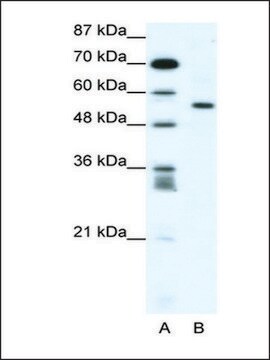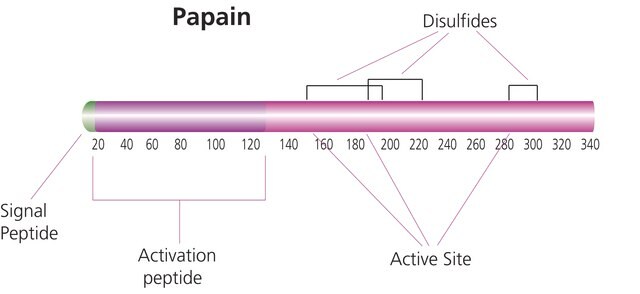MAB1407P
Anti-Macrophages/Granulocytes Antibody, clone OX-41
clone OX-41, Chemicon®, from mouse
Synonym(e):
CD172 antigen-like family member A, CD172a antigen, Inhibitory receptor SHPS-1, Macrophage fusion receptor, MyD-1 antigen, SHP substrate 1, SHP substrate-1, Signal-regulatory protein alpha-1, signal-regulatory protein alpha
About This Item
Empfohlene Produkte
Biologische Quelle
mouse
Qualitätsniveau
Antikörperform
affinity isolated antibody
Antikörper-Produkttyp
primary antibodies
Klon
OX-41, monoclonal
Aufgereinigt durch
affinity chromatography
Speziesreaktivität
mouse, human, rat
Hersteller/Markenname
Chemicon®
Methode(n)
flow cytometry: suitable
immunocytochemistry: suitable
immunohistochemistry (formalin-fixed, paraffin-embedded sections): suitable
western blot: suitable
Isotyp
IgG2a
NCBI-Hinterlegungsnummer
UniProt-Hinterlegungsnummer
Versandbedingung
wet ice
Posttranslationale Modifikation Target
unmodified
Angaben zum Gen
human ... SIRPA(140885)
Allgemeine Beschreibung
Spezifität
Labels most macrophages including resident peritoneal, alveolar and activated macrophages. Recognition of other macrophages is limited to only occasional kupffer cells. In addition it labels granulocytes and a population of dendritic cells. It also labels brain extensively.
Immunogen
Anwendung
Entzündung & Immunologie
Entzündungs- & Autoimmunmechanismen
Frozen sections and Formalin fixed, paraffin embedded tissue sections (requires trypsin or pronase pre-treatment).
Western Blotting:
A previous lot of this antibody was used in western blot.
Flow cytometry:
1:100-1:200 of a previous lot was used. (Use 10 μL of working dilution for 10^6 cells in 100 μL).
Optimal working dilutions must be determined by the end user.
Qualität
Immunocytochemistry Analysis:
Confolcal fluorescent analysis of Macrophages/ Granulocytes using anti-Macrophages/ Granulocytes mouse monoclonal antibody.
Zielbeschreibung
Verlinkung
Physikalische Form
Lagerung und Haltbarkeit
Hinweis zur Analyse
Macrophages, monocytes, lymphoid organs.
Sonstige Hinweise
Rechtliche Hinweise
Haftungsausschluss
Sie haben nicht das passende Produkt gefunden?
Probieren Sie unser Produkt-Auswahlhilfe. aus.
Lagerklassenschlüssel
12 - Non Combustible Liquids
WGK
WGK 2
Flammpunkt (°F)
Not applicable
Flammpunkt (°C)
Not applicable
Analysenzertifikate (COA)
Suchen Sie nach Analysenzertifikate (COA), indem Sie die Lot-/Chargennummer des Produkts eingeben. Lot- und Chargennummern sind auf dem Produktetikett hinter den Wörtern ‘Lot’ oder ‘Batch’ (Lot oder Charge) zu finden.
Besitzen Sie dieses Produkt bereits?
In der Dokumentenbibliothek finden Sie die Dokumentation zu den Produkten, die Sie kürzlich erworben haben.
Unser Team von Wissenschaftlern verfügt über Erfahrung in allen Forschungsbereichen einschließlich Life Science, Materialwissenschaften, chemischer Synthese, Chromatographie, Analytik und vielen mehr..
Setzen Sie sich mit dem technischen Dienst in Verbindung.








